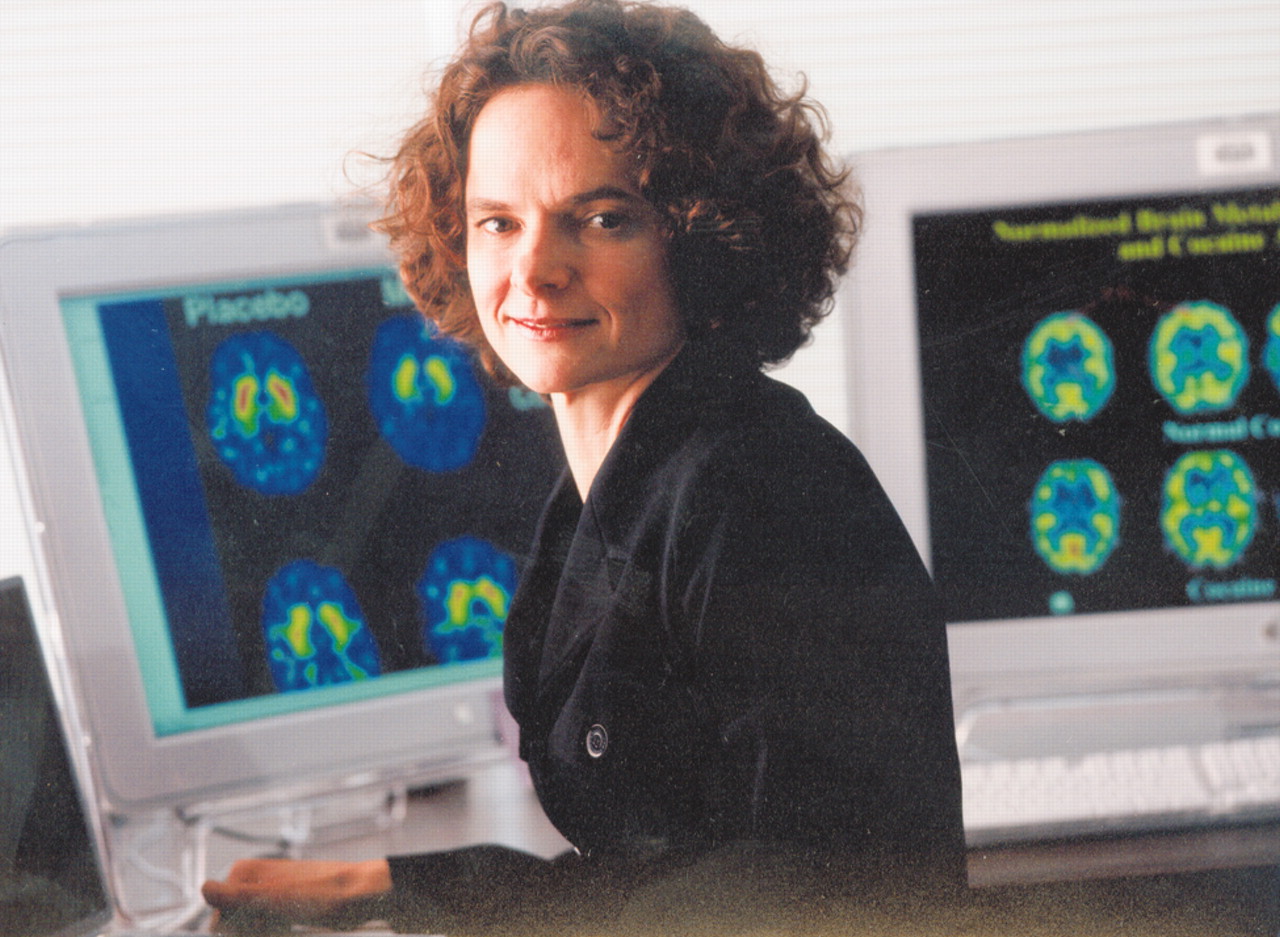In a bold undertaking, the National Institute on Drug Abuse (NIDA) has partnered with APA on a wide-ranging series of presentations at this year’s annual meeting in New York City. The series is centered around two themes: the high degree of comorbidity of substance abuse and mental illnesses, and the emerging concept that substance abuse is a developmental disorder that begins in adolescence.
“It is long overdue that the psychiatric community starts to recognize that [these two concepts need] to be included in training and must be emphasized in terms of how we manage the treatment of our patients everyday,” NIDA Director Nora Volkow, M.D., told Psychiatric News.
Throughout the annual meeting, substance abuse is highlighted as the topic in more than 40 sessions, approximately 30 of which have been directly planned and organized by NIDA. NIDA officials, including Volkow, worked closely with the APA Council on Addiction Psychiatry, and in particular its chair, Shelly F. Greenfield, M.D., and vice chair, Herbert D. Kleber, M.D., in pulling together the wide array of informative presentations.
Session formats include everything from issue workshops to lectures and symposia. With more than 100 presenters taking part in the track, many renowned addiction specialists will present on topics as varied as a lecture by Nobel laureate Paul Greengard, Ph.D., on “Signal Integration in the Brain,” to an issue workshop chaired by Donald Vereen Jr., M.D., titled “Steroid Abuse: Growing Problem for Adolescents and a Hidden Problem for Adults.” Volkow will present the lecture “Why Does the Human Brain Become Addicted?”
Comorbidity the Rule, Not Exception
“Number one in my mind, by far, is the issue of comorbidity,” Volkow continued. “The mentally ill are at very high risk for substance abuse and addiction.” For example, she noted, the prevelance of cigarette smoking in the general population is around 23 percent. In patients with schizophrenia and patients with a mood disorder, it is close to 90 percent.
“If we do not address the issue of substance abuse in our mentally ill patients, we will basically be much less likely to treat them properly,” Volkow said.
The psychiatric community has started to recognize that the consumption of drugs can interfere with the proper management of psychiatric illness, she noted. It is now well documented, she continued, that in patients with schizophrenia, the use of stimulant drugs interferes with proper treatment—changing symptoms as well as how the patient responds to antipsychotic therapy. But, she said, that realization has not translated into daily assessment and care.
“I knew this even as a resident,” Volkow explained. “If I had a patient with schizophrenia who suddenly deteriorated and I didn’t know why, I might find out later that the patient had been using cocaine. But then I was interested in research, and I was excluding patients with schizophrenia who consumed drugs. Rapidly, I discovered, it is very difficult to find subjects with schizophrenia who do not have some sort of substance abuse problem.”
The same is true, she said, of people with affective disorders such as depression, and a great deal of evidence is emerging regarding the high degree of comorbidity in people with substance abuse and conduct disorders and attention-deficit/hyperactivity disorder.
“Then,” Volkow added, “you start to realize that the same is true of anxiety disorders, posttraumatic stress disorder, and use of alcohol. It is just so obvious that we have to work harder to make it tangible. Even if it is obvious, it is ignored. So we are stressing this as one of our themes.”
Is It a Developmental Disorder?
Just as important, Volkow believes, is the series’ second broad theme.
“We must make the psychiatric community understand that substance abuse is not simply a disease of the brain, but it is a developmental disorder,” she stressed, “and it begins early in life—during adolescence. And I want psychiatrists to put two and two together, and say, ‘Well then, who are those with the highest risk of taking drugs? Adolescents with mental illness. It is a population crying for help.’ ”
Childhood and adolescence, Volkow explained, are stages in which the brain is much more plastic, “when the environment is literally molding your brain.” And because drugs are part of most adolescents’ environment today, “consumption of drugs during adolescence is highly likely to have longer-lasting and more fundamental effects than if a person starts to take drugs later in life.”
But many questions remain to be answered, Volkow noted. Why are substance abuse and mental illness so highly comorbid? Does the use of drugs cause brain changes that make an individual more susceptible to mental illness, or does mental illness lower the threshold for substance abuse? How does this comorbidity affect treatment, and more importantly, how does it affect prognosis?
“Especially in the field of child psychiatry, one of the aspects of daily clinical care that must be monitored is the consumption of drugs by patients. It is absolutely critical,” Volkow said.
Fundamental Changes Coming
Volkow stressed that what she believes must happen are fundamental changes in how psychiatrists think about mental illness and substance abuse—a change to thinking more often of the two together, not as separate.
“We must change the basic psychiatric interview and strengthen our screening for substance abuse,” she said, stressing that drug use and addiction are often extremely difficult to detect.
“Once psychiatrists start to recognize the interaction, they will realize that [substance abuse] is a variable that can predict whether a patient will be compliant with their medications, whether a patient will be more likely to have side effects from medication, or whether particular medications will be as effective.”
The same is true, Volkow added, of the substance abuse community: These clinicians must realize that the most vulnerable population for addiction is people with mental illness. “All along,” she noted, “we were studying drug addiction but excluding patients with mental illness. We were doing a terrible disservice to the entire field.”
Each of the NIDA sessions is noted in the annual meeting program as a “Collaborative Session With the National Institute on Drug Abuse.” Look for a box listing the entire series in a future issue. ▪

